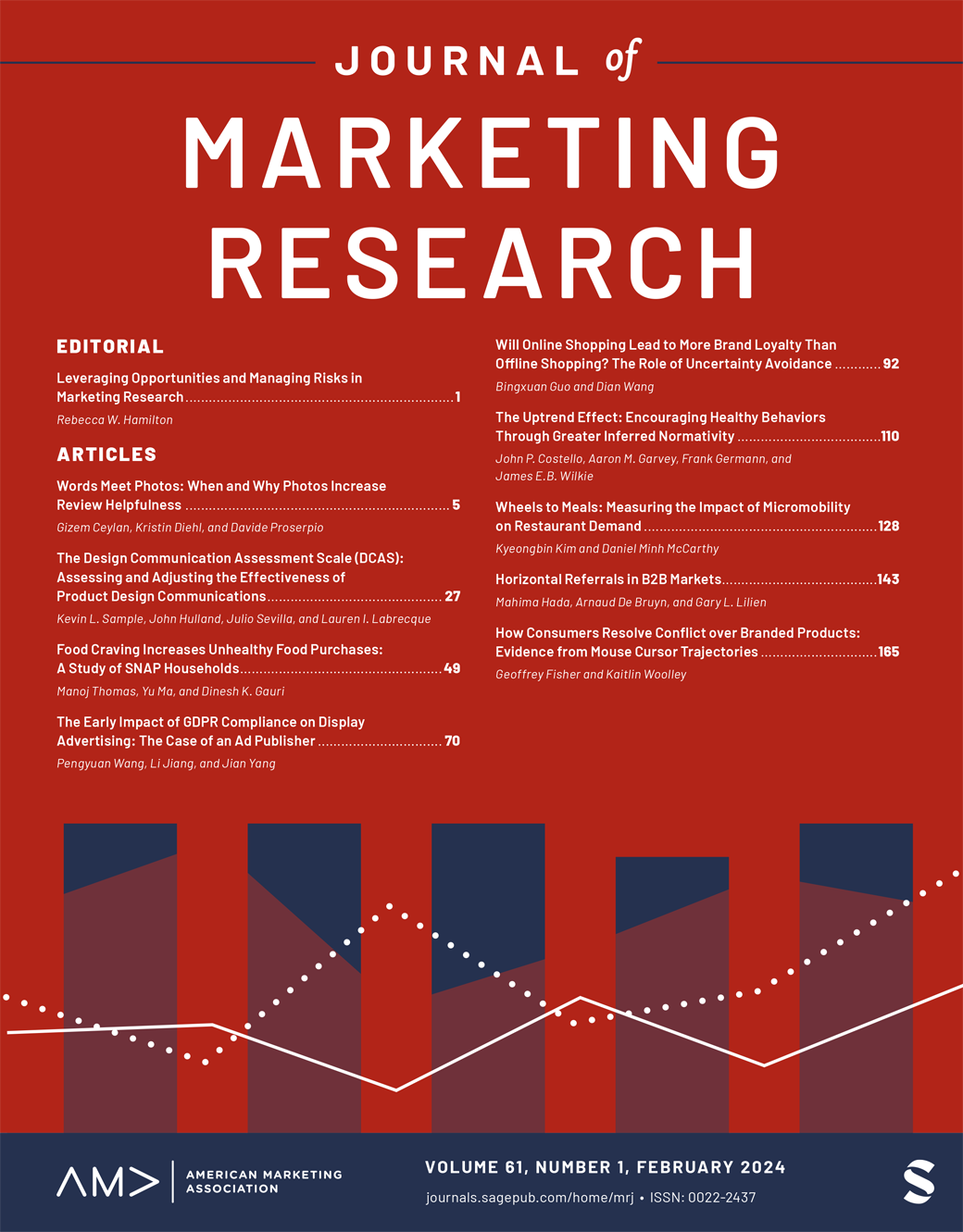Attention Trajectories Capture Utility Accumulation and Predict Brand Choice
IF 5
1区 管理学
Q1 BUSINESS
引用次数: 2
Abstract
Trajectories of attention capture the accumulation of brand utility during complex decision-making tasks. Thus, attention trajectories, as reflected in eye movements, predict the final brand choice of 85% of consumers before they implement it. Even when observing eye movements in only the first quarter of the decision process, attention already predicts brand choice much better (45%) than chance levels (20%). This superior prediction performance is due to a “double attention lift” for the chosen brand: The chosen brand receives progressively more attention toward the moment of choice, and more of this attention is devoted to integrating information about the brand rather than to comparing it with other options. In contrast, the currently owned brand grabs attention early in the task, and its attention gain persists for brand-loyal consumers and shifts for brand-switching consumers. A new attention and choice model used in tandem with the Bayesian K-fold cross-validation methodology on eye-tracking data from 325 representative consumers uncovered these attention trajectory effects. The findings contribute to closing important knowledge gaps in the attention and choice literature and have implications for marketing research and managerial practice.注意力轨迹捕捉效用积累预测品牌选择
注意力轨迹捕捉了复杂决策任务中品牌效用的积累。因此,反映在眼球运动中的注意力轨迹可以预测85%的消费者在实施之前的最终品牌选择。即使在决策过程的第一季度观察眼球运动,注意力对品牌选择的预测(45%)也比机会水平(20%)好得多。这种卓越的预测性能是由于所选品牌的“双重注意力提升”:在选择的时刻,所选品牌逐渐受到更多的关注,这种关注更多地集中在整合有关品牌的信息上,而不是将其与其他选项进行比较。相比之下,目前拥有的品牌在任务的早期就抓住了注意力,它的注意力持续获得品牌忠实消费者,并转移到品牌转换消费者。一种新的注意力和选择模型与贝叶斯K-fold交叉验证方法相结合,对325名有代表性的消费者的眼睛跟踪数据进行了验证,发现了这些注意力轨迹效应。研究结果有助于填补注意力和选择文献中的重要知识空白,并对营销研究和管理实践具有启示意义。
本文章由计算机程序翻译,如有差异,请以英文原文为准。
求助全文
约1分钟内获得全文
求助全文
来源期刊

Journal of Marketing Research
BUSINESS-
CiteScore
10.30
自引率
6.60%
发文量
79
期刊介绍:
JMR is written for those academics and practitioners of marketing research who need to be in the forefront of the profession and in possession of the industry"s cutting-edge information. JMR publishes articles representing the entire spectrum of research in marketing. The editorial content is peer-reviewed by an expert panel of leading academics. Articles address the concepts, methods, and applications of marketing research that present new techniques for solving marketing problems; contribute to marketing knowledge based on the use of experimental, descriptive, or analytical techniques; and review and comment on the developments and concepts in related fields that have a bearing on the research industry and its practices.
 求助内容:
求助内容: 应助结果提醒方式:
应助结果提醒方式:


